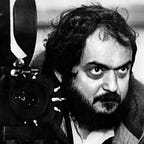The Man Who Wasn’t There (Noir-vember 2023)
The Coen Brothers’ Black & White masterpiece.
DISCLAIMER
The following article is not intended to be a review of the film “The Man Who Wasn’t There”. Unfortunately, I’m not a movie expert or a film critic, so everything that I’ve written is based on my personal thoughts. I’m just a guy who likes films. Enjoy!
When we think about the Coen Brothers, we’d most probably think about “The Big Lebowski” or “No Country for Old Men”, their most famous films; for a good reason, those are both exceptional movies. But among all the underrated films by the Minnesota duo, one comes to my mind more than the others: “The Man Who Wasn’t There", a film noir released by Focus Features in 2001. The reception for the film wasn’t exactly overwhelming, having grossed only $18.9 million at the box office. However, time proved the masses wrong: “The Man Who Wasn’t There” is as incredible a picture now as it was back then. Art survives entertainment and time proves it. It is a concept that is unknown to most of the current filmmakers, apparently. Here are some thoughts on the 9th Motion Picture by the Coen Bros.
Don’t Think, Be Nothing
Ed Crane is a barber who works in his brother-in-law’s barbershop and he’s depressed. Well, it’s not really specified if he has any mental issues, but it is clear he’s not very lucid. Something happened in his life, something that he doesn’t want to tell us, even though he narrates the whole movie. This sense of mysteriousness the character gives to the audience, once again, proves the great screenwriting ability of the Coens. He’s completely unable to get out of his personal hell, and everything he does reflects his inner emptiness and suffering. “The Man Who Wasn’t There” is a reflection on life and the lack of meaning of it to a man who is dead inside. Everything that could go wrong does go wrong, but Ed doesn’t flinch. His tormented soul holds him hostage. Billy Bob Thornton is exceptionally good at giving the audience the image of a soulless man, and the rest of the cast is also incredible. In fact, all the secondary characters are really important in defining Ed Crane’s behavior because all the emotions they feel are clearly emphasized way more than they should be, and that gives the audience an amplified sense of emotionless behavior by the protagonist. James Gandolfini and Frances McDormand are just superb. Incredible performances for an incredible movie.
Earlier, I mentioned Ed Crane’s past life. We get the feeling that something occurred in his past that he doesn’t want to think or talk about, something that changed his life forever. If we think about it, the movie actually answers the question: “What happened?” The one thing that moves Ed enough to get himself out of the veil of sadness that has been upon him is Scarlett Johansson’s character, Birdy. Her talent moves Ed. It moves him very much. That is the answer to our question: Ed experienced the destruction of a dream, of a happy life, and this led him to be indifferent towards others, in an almost vegetative state from a human point of view. There’s no message in there. No “you can do it”. Just a man that lives but doesn’t want to.
Black & White
The film was originally shot in color and then turned to Black & White digitally. Roger Deakins’ cinematography is majestic and the lack of color emphasizes the stylistic perfection of the two-time Oscar winner’s work. Every shadow, every light, and every nuance of grey is fundamental to the story that’s being narrated. The Coen Bros. have always loved the noir genre. Their first film “Blood Simple” (1984) is, in fact, a noir movie, but “The Man Who Wasn’t There” is undoubtedly their best film regarding this genre. The choice of making it Black & White is not just a nostalgia move, but is also very important to underline the lack of emotions that characterizes the protagonist. It’s a great metaphor for losing the understanding of life, of letting life slide through us without being capable of catching it and making the best out of it. Black & White is actually the main character of the film.
Violence
Violence is a theme that a vast bunch of directors have analyzed. From physical violence to psychological violence, almost every artist in all arts has described this aspect of human beings. The Coen Brothers are on the list too. Violence in this film is treated very peculiarly compared to what Cinema normally tends to do with it. In most films, you’d be sure to find violence treated in a very “pulp” way. Most of the time, it’s overacted and it doesn’t really resemble real violence. This is not the case for every film, obviously. It’s a problem that can mainly be found in Mainstream Cinema. In “The Man Who Wasn’t There”, the concept of violence is clearly taken by the “New Hollywood” wave. It’s gritty and realistic. Both physical and psychological violence are depicted in a very human way, a realistic approach that could make the general audience feel uncomfortable. That’s also something that is lacking from Cinema nowadays; not the depiction of violence per se, but analyzing the human aspect of it and not just using violence for the sake of a badly directed action scene.
Thanks to everyone who will read or has read this article. It’s nice to know that your opinions are valued by others. Let me know your thoughts on the film in the comments, follow me for more articles on the Seventh Art, and have a good day!
(And please go see “Napoleon” in theatres!)
